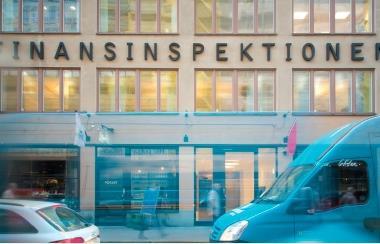The largest of Sweden’s national pension funds has warned against a key element of the transformational plan to modernise its role as the default option in the premium pension system.
In its response to the consultation on a proposal to reform the default provision in the first pillar system of individual accounts, AP7 said the idea of splitting the product into separate savings and payout phases risked losing sight of the whole – and ultimately reducing pensions.
The memorandum “Förvalsalternativet inom premiepensionen” was published in February, and is based on a government-commissioned proposal drawn up by pensions expert Mats Langensjö.
As things stand, the SEK670bn (€63.4bn) pension fund’s balanced Såfa pension product – automatically allotted to people making no active provider choice in the defined benefit premium pension – can continue from savings to payout phase.
But under the new plan, investment risk in the disbursement phase is to be lower than in the savings phase, and the traditional insurance currently managed by the Swedish Pension Agency (Pensionsmyndigheten) is to constitute the default’s payment option.
AP7 said it agreed with proposals that an overall goal should be formulated for the whole of the default alternative, and that the investment rules should be broadened.
But given that an overall goal was needed, the pension fund went on to say it was “counterproductive and surprising” that the plan involved breaking the default option into two separate products with two different principals.
“This will lead to fragmentation that complicates the holistic approach and long-term view that an effective default solution needs,” AP7 said.
“This will lead to fragmentation that complicates the holistic approach and long-term view that an effective default solution needs”
AP7
On top of this, the fund said, deciding to abandon a functioning product for an alternative where neither the parts nor the whole had been worked through entailed unmotivated risk-taking.
“Risk-taking between the savings and the payment phase must be balanced and the total risk-taking needs to be adjusted to the system’s overall goal of clearly exceeding the development of the income index,” AP7 said.
Splitting up the different management phases risked leading to sub-optimal decision making with insufficient regard for the whole, it said.
“The consequence will then be that future pensions will be lower and that pension savers will be exposed to unnecessary risks through an abrupt transition from the savings phase to the payment phase,” the fund said.
Meanwhile, the Swedish Pensions Agency, which currently manages the premium pension system’s funds platform as well as running the traditional insurance payout phase of the default alternative, said in its response to the consultation that it approved of the plan to let AP7 invest in alternatives for the first time – although the proportion of these assets suggested was too high.
But it did not agree with having an overall target for the default option in the premium pension system, because in practice, it said, there would be two state default products with different purposes and designs.
“We, therefore, propose two different goals that are adapted to the purpose of the saving and disbursement phase, which provides better conditions for control and follow-up,” the authority said.
In other feedback, the pensions agency also said it was positive about the idea of transferring default option savers to traditional insurance automatically before disbursement.
However, funds which were switched in this way should then be transferrable back to unit-linked insurance, it said.
“Otherwise, the proposal entails unreasonable lock-in for pension savers,” the pensions agency said.









No comments yet